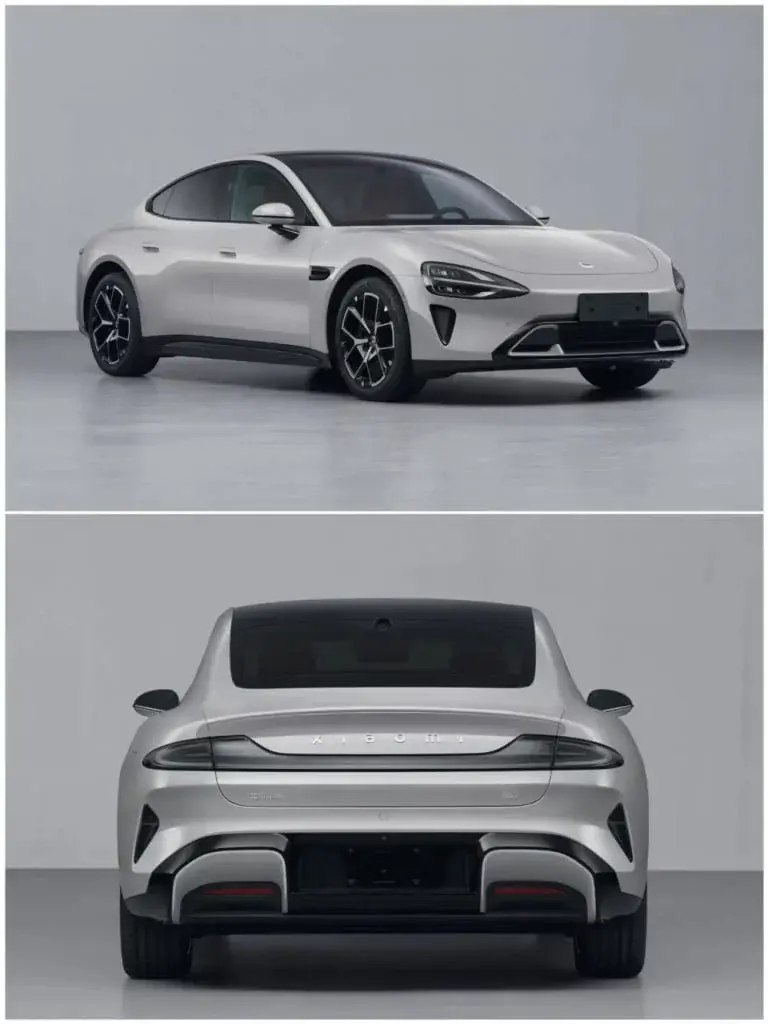Xiaomi's Debut Electric Vehicle, the SU7, Gets Green Light from China's Ministry of Industry and Information Technology
The much-anticipated inception of Xiaomi's inaugural electric car, the SU7 (Speed Ultra 7), is on the horizon. This development follows the official approval granted by China's Ministry of Industry and Information Technology (CMIIT) for the EV's release. Through the certification process, specifics and images of the SU7 series have surfaced, comprising three distinct editions: SU7, SU7 Pro, and SU7 Max. Let's delve deeper into the details surrounding Xiaomi's inaugural venture into the electric vehicle market.
Xiaomi's SU7: An In-Depth Exploration
The images unveiled by CMIIT showcase the Xiaomi SU7 as a C-class sedan, identified by two model numbers: BJ7000MBEVR2 and BJ7000MBEVA1. The former variant, potentially labeled the SU7, is outfitted with a singular motor sourced from UAES (United Automotive Electronic Systems), delivering a peak power of 220kW (295hp). Embracing lithium iron phosphate (LPT) batteries from FinDreams, the battery-making division of BYD, the vehicle also offers an optional rooftop-mounted LiDAR system aimed at bolstering driver-assistance functionalities and enabling autonomous features.
Unveiling the Xiaomi SU7 Pro and SU7 Max
The additional model numbers linked with the Xiaomi SU7 family pertain to the SU7 Pro and SU7 Max models. These iterations operate on dual motors, with the SU7 Pro generating 220kW (295hp) while the SU7 Max boasts a formidable 275kW (386hp). These motors are sourced from Suzhou Innovance Automotive, a China-based company. Equipped with Li-ion ternary batteries supplied by CATL, both the SU7 Pro and SU7 Max showcase notable power and efficiency.
Innovative Attributes and Technical Specifications
Diving into the innovative attributes of the Xiaomi SU7 series, users can opt for models with or without LiDAR technology, with the LiDAR component strategically positioned behind the front windshield. Noteworthy features include a camera on the B-pillar, hinting at the potential incorporation of a face recognition unlocking mechanism within the SU7. Dimension-wise, the SU7 stretches 4,997mm in length, 1.963mm in width, and 1,455mm in height, with a 3,000nm wheelbase. These dimensions surpass prominent EVs such as the Tesla Model 3 and Nio ET5. The base SU7 weighs 1,980kg, whereas the Pro and Max versions tip the scales at 2,205kg.
Personalization Options and Aesthetic Appeal
Anticipating a seamless integration of HyperOS into its onboard system, the Xiaomi SU7 series promises interconnectedness with other Xiaomi devices. On the design front, the SU7 flaunts a unique appearance, spearheaded by the lead designer of the BMW iX, alongside inputs from professionals associated with Mercedes-Benz EQXX. Sporting a sporty allure, highlighted by striking yellow Brembo calipers, Michelin PSEV tires, and a three-part electric rear wing, the vehicle ensures top-notch wind resistance and exceptional handling performance.
Launch Schedule and Pricing Insights
The initiation of mass production for the Xiaomi SU7 series is scheduled to kick off in December 2023. Trial production has reportedly commenced at BAIC's Beijing plant, with deliveries projected to begin in February 2024. While specific pricing particulars are pending confirmation, speculations hint at the SU7 series launching with a starting price of 149,000 Yuan (~$20,500). Rumors also suggest that the series will offer at least gray and blue color variants for consumers.
In wrapping up, Xiaomi's stride into the electric vehicle realm with the SU7 series is igniting considerable enthusiasm. With its elegant design, robust performance, and forward-thinking features, the SU7 holds promise for making a significant impact on the EV landscape. As the official launch eagerly awaits, Xiaomi continues to cement its stature as a prominent force in the realms of technology and automotive innovation.



